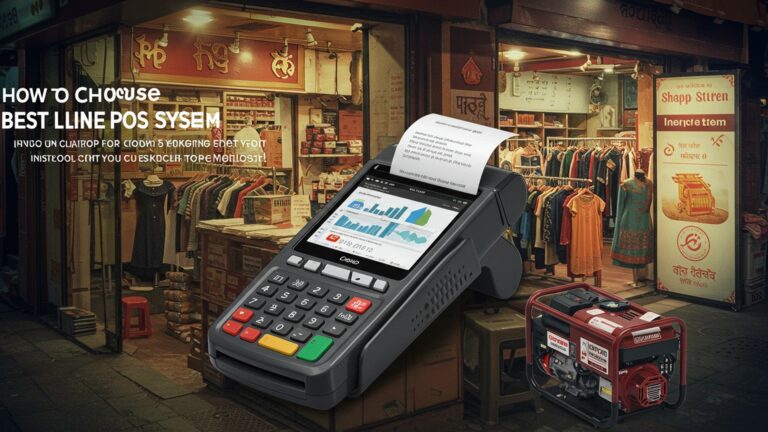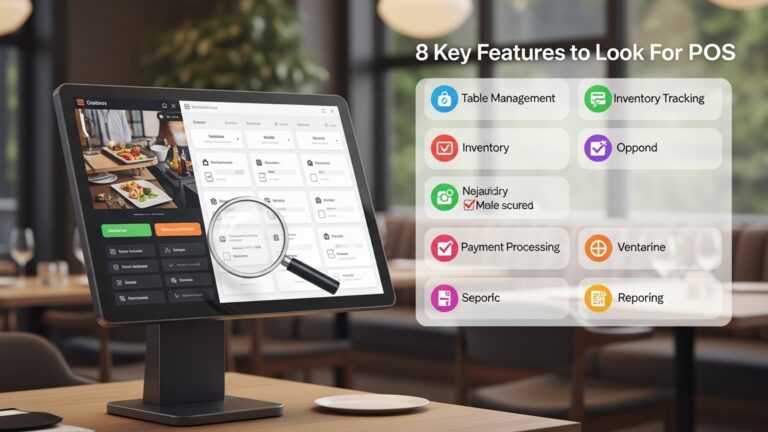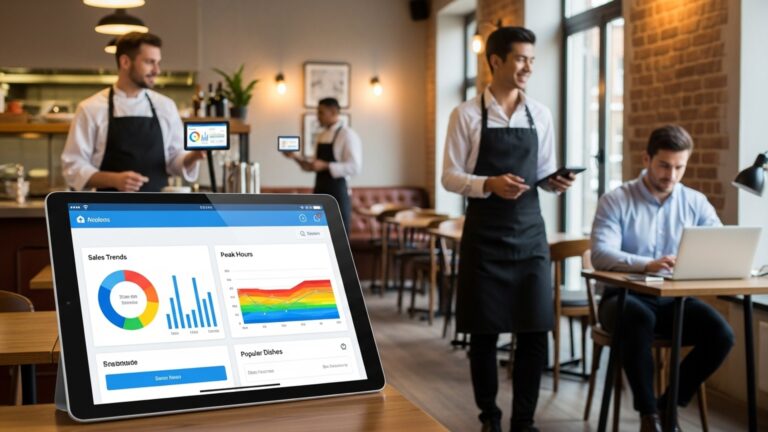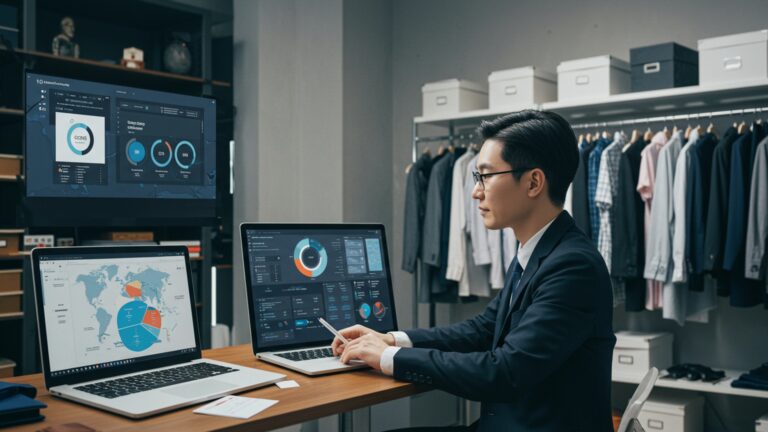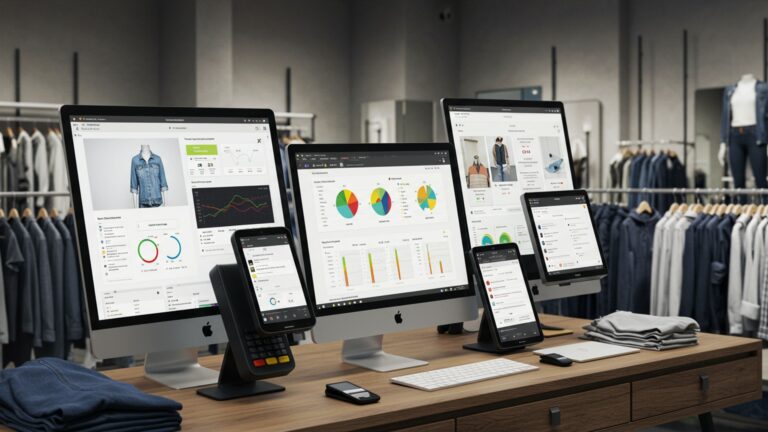Discover 8 Powerful Ways Restaurant POS Elevates Customer Experience
Today’s discerning diners expect more than just a meal; they demand seamless, personalized experiences from the moment they consider a restaurant to the final payment. In this competitive landscape, basic transactional systems no longer suffice, often creating friction through slow service or order inaccuracies. But, modern Restaurant POS software emerges as the pivotal technology, actively orchestrating a superior customer journey. By integrating sophisticated features like QR code table-side ordering, AI-driven menu recommendations based on past preferences. expedited contactless payment options, cutting-edge POS platforms significantly reduce wait times and enhance order accuracy. This strategic adoption moves restaurants beyond mere operational efficiency, leveraging real-time data to anticipate needs and deliver truly memorable interactions that cultivate lasting loyalty.

1. Streamlined Order Taking and Unmatched Accuracy
When customers visit a restaurant, their experience often begins with the ordering process. Clunky, manual systems can lead to frustration, miscommunications. incorrect orders. This is where modern Restaurant POS software truly shines, transforming a potential pain point into a seamless interaction. A Restaurant POS software system digitizes the entire ordering workflow. Instead of handwritten notes prone to misinterpretation, servers use handheld devices or fixed terminals to input orders directly into the system. This data is then instantly transmitted to the kitchen display system (KDS) or printers at specific stations (e. g. , bar, pastry).
- Reduced Errors
- Faster Service
- Easy Customization
By eliminating handwritten slips and direct manual entry into the kitchen, the chances of human error are drastically cut. Imagine ordering a “no onions” burger and actually getting it that way every time. This precision builds trust and satisfaction.
Orders reach the kitchen instantaneously, cutting down on the time it takes for food preparation to begin. This efficiency translates directly into shorter wait times for customers, a critical factor in dining satisfaction.
Advanced Restaurant POS software allows servers to easily add special requests, dietary restrictions, or modifications (e. g. , “extra sauce,” “gluten-free bun”) directly into the order. This ensures that every customer’s unique preferences are accurately communicated and fulfilled.
Consider a bustling Friday night at “The Urban Bistro.” Before implementing their new Restaurant POS software, a server might accidentally write “medium-rare” instead of “medium” for a steak, leading to a re-fire and a delayed meal for the customer. With the POS, the server selects the precise cook temperature from a pre-defined option, ensuring accuracy and a happy patron. This immediate, accurate communication dramatically enhances the customer’s perception of service quality.
2. Accelerated Service and Minimized Wait Times
Time is a precious commodity, especially for diners. Long waits, whether for seating, ordering, or paying, can significantly detract from the overall dining experience. Robust Restaurant POS software is engineered to optimize every stage of service, creating a flow that feels effortless for the customer.
What is Restaurant POS software? At its core, Restaurant POS (Point of Sale) software is a comprehensive system designed to manage all aspects of a restaurant’s operations, from order processing and inventory to payment collection and customer relationship management. It replaces traditional cash registers and manual processes with an integrated digital platform.
With integrated table management features, the Restaurant POS software provides real-time visibility into table availability, helping hosts seat guests more quickly. Once seated, the speed of order taking (as discussed above) is just the beginning.
- Efficient Payment Processing
- Optimized Workflow
- Kitchen Efficiency
Modern Restaurant POS software supports a wide array of payment methods, including EMV chip cards, contactless payments (NFC). mobile wallets (Apple Pay, Google Pay). This flexibility, combined with quick transaction processing times, means customers spend less time waiting for bills and change. Many systems also allow for tableside payments, eliminating the need for servers to run back and forth to a central terminal.
By automating routine tasks, servers are freed up to focus on customer interaction rather than administrative duties. This allows them to be more attentive, anticipate needs. provide a more personalized service experience.
Beyond just receiving orders, some Restaurant POS software integrates with kitchen display systems (KDS) that optimize food preparation. For example, a KDS can prioritize orders, display cooking times. even suggest batching similar items, leading to faster and more coordinated meal delivery.
A study by Oracle found that 70% of diners expect restaurants to use technology to enhance their experience. Minimizing wait times through efficient Restaurant POS software directly addresses this expectation, making dining out a more pleasant and convenient affair.
3. Personalized Dining Experiences and Enhanced Loyalty
In an increasingly competitive market, personalization is key to fostering customer loyalty. Modern Restaurant POS software empowers establishments to go beyond generic service, creating memorable experiences that make customers feel valued and understood.
- Customer Profiles
- Tailored Recommendations
- Loyalty Programs
Advanced Restaurant POS software can store detailed customer profiles, including past orders, dining preferences, allergies. even special occasions (like birthdays or anniversaries). Imagine a regular customer, Sarah, walking into her favorite café. The server, using the POS, sees that Sarah always orders a large latte with almond milk. This allows them to greet her by name and even anticipate her order, making her feel recognized and appreciated.
Based on order history, the system can suggest new dishes or drinks that a customer might enjoy, acting like a digital sommelier or personal chef. This thoughtful recommendation can introduce customers to new favorites and enhance their culinary journey.
Integrated loyalty programs within the Restaurant POS software allow restaurants to reward repeat business effortlessly. Customers can earn points, receive exclusive discounts, or get special offers directly tied to their dining habits. This not only encourages repeat visits but also makes customers feel part of an exclusive club. For instance, “Pizza Palace” uses its Restaurant POS software to track customer purchases, automatically awarding a free pizza after every ten orders – a simple yet effective way to build loyalty.
This data-driven approach to personalization, facilitated by robust Restaurant POS software, transforms a transactional interaction into a relationship, ensuring customers return not just for the food. for the experience.
4. Enhanced Payment Flexibility and Secure Transactions
The checkout experience is the final touchpoint for a customer. a smooth, secure process can leave a lasting positive impression. Conversely, fumbling with payment methods or long queues can undo an otherwise excellent meal. Restaurant POS software provides a superior payment experience in several ways.
- Diverse Payment Options
- Tableside Payments
- Split Bills with Ease
- Enhanced Security
Modern Restaurant POS software supports virtually every payment method customers might prefer: credit/debit cards (with EMV chip support), contactless payments (NFC via smartphones or cards), mobile wallets (Apple Pay, Google Pay, Samsung Pay), gift cards. even digital payment apps. This flexibility caters to individual preferences and convenience.
Many Restaurant POS software systems enable servers to process payments directly at the table using handheld devices. This eliminates the need for customers to hand over their cards or wait for the server to return from a central terminal, significantly speeding up the checkout process and improving security.
A common point of friction, especially for larger groups, is splitting the bill. Restaurant POS software makes this process incredibly simple, allowing servers to split checks by item, by equal amounts, or by custom amounts, all within a few taps. This convenience prevents awkward calculations and potential errors, ensuring a smooth end to the meal.
Reputable Restaurant POS software employs advanced encryption and tokenization technologies to protect sensitive customer payment data. This adherence to PCI DSS (Payment Card Industry Data Security Standard) compliance gives customers peace of mind, knowing their financial data is secure.
In a world where data breaches are a concern, the robust security features built into modern Restaurant POS software are not just a benefit for the business. a crucial element in building customer trust and confidence.
5. Improved Menu Management and Transparent data
A restaurant’s menu is its promise to the customer. Ensuring that promise is clear, accurate. easily adaptable is crucial for a positive dining experience. Traditional paper menus can quickly become outdated, leading to customer disappointment when items are unavailable or prices have changed. Restaurant POS software offers dynamic menu management that benefits both the business and its patrons.
- Real-Time Menu Updates
- Dietary data and Allergens
- Seasonal Specials and Promotions
With a Restaurant POS software system, menu items, prices. descriptions can be updated instantly across all ordering touchpoints – from in-house terminals and digital menu boards to online ordering platforms. If a popular dish sells out, it can be marked as unavailable immediately, preventing customers from ordering something that isn’t there.
Modern Restaurant POS software allows restaurants to tag menu items with detailed data about ingredients, nutritional facts. common allergens (e. g. , gluten, nuts, dairy). This transparency empowers customers with dietary restrictions or allergies to make informed and safe choices, significantly enhancing their dining confidence and experience.
Running a seasonal special or a limited-time promotion becomes effortless. The Restaurant POS software enables quick addition and removal of these items, complete with accurate pricing and descriptions, ensuring customers are always presented with the most current offerings.
Imagine a customer with a severe nut allergy dining at “Green Garden Cafe.” Instead of having to repeatedly question the server about ingredients, the server can quickly access detailed allergen insights directly from the Restaurant POS software, confirming safe options and showcasing a high level of care and professionalism. This level of transparency is invaluable for customer peace of mind.
6. Effective Feedback Collection and Swift Resolution
Customer feedback is a goldmine for restaurants, providing insights that can drive improvements and foster loyalty. But, traditional feedback methods (like comment cards) are often inefficient and slow. Restaurant POS software integrates feedback mechanisms that make it easy for customers to share their thoughts and for restaurants to act on them promptly.
- Integrated Feedback Channels
- Real-Time Alerts
- Data-Driven Improvement
Many Restaurant POS software solutions include built-in features for customer feedback. This could be a quick rating prompt on a tableside payment device, a QR code on the receipt linking to an online survey, or even direct integration with popular review platforms. This makes leaving feedback convenient and accessible for customers.
When negative feedback is submitted, the Restaurant POS software can be configured to send immediate alerts to management. This allows for swift intervention and resolution, often before the customer even leaves the premises. A quick apology, a complimentary dessert, or a discount on a future visit can turn a potentially negative experience into a positive recovery, significantly impacting customer satisfaction.
The feedback collected through the Restaurant POS software is centralized and analyzable. Restaurants can identify common issues, pinpoint areas for improvement (e. g. , slow service during specific hours, unpopular menu items). measure the impact of changes they implement. This systematic approach to improvement directly enhances the customer experience over time.
In a competitive landscape, actively seeking and responding to feedback, facilitated by intelligent Restaurant POS software, differentiates a restaurant that merely serves food from one that truly values its patrons.
7. Consistent Quality through Robust Inventory Management
Nothing disappoints a customer more than ordering a favorite dish only to be told it’s unavailable, or worse, receiving a dish that tastes different due to inconsistent ingredients. While not directly customer-facing, the inventory management features of Restaurant POS software are critical for ensuring a consistently high-quality dining experience.
- Preventing Stock-Outs
- Ensuring Freshness
- Standardized Recipes and Portion Control
Restaurant POS software tracks ingredient usage in real-time as orders are placed. When stock levels fall below a predefined threshold, the system can automatically generate alerts or even reorder requests. This proactive approach minimizes the chances of running out of popular ingredients, ensuring customers can always get their desired menu items.
By monitoring inventory and supplier lead times, the Restaurant POS software helps managers optimize ordering to reduce waste and ensure that ingredients are always fresh. Fresh ingredients directly translate to better-tasting food and a superior dining experience.
Many Restaurant POS software systems allow for the storage of detailed recipes and portion sizes. This standardization ensures that every dish is prepared consistently, from the amount of sauce to the ratio of ingredients, leading to a predictable and satisfying taste experience for the customer every time they visit.
A well-managed inventory, powered by comprehensive Restaurant POS software, is the silent hero behind a consistent and delightful meal, preventing disappointments and reinforcing customer trust in the restaurant’s quality.
8. Data-Driven Service Enhancements and Future Planning
The true power of Restaurant POS software extends beyond day-to-day operations; it lies in its ability to collect and assess vast amounts of data. This data, when properly utilized, becomes an invaluable tool for understanding customer behavior, optimizing operations. continuously enhancing the overall dining experience.
- Identifying Peak Times and Staffing Needs
- Popular Menu Item Analysis
- Understanding Customer Trends
Restaurant POS software provides detailed reports on sales volume, table turnover. customer traffic patterns throughout the day, week. month. By analyzing this data, managers can accurately predict peak hours and adjust staffing levels accordingly. This ensures there are always enough servers, hosts. kitchen staff to handle demand, leading to faster service and more attentive care during busy periods.
The software tracks sales data for every menu item. This allows restaurants to identify their most popular dishes, informing future menu development and marketing strategies. Conversely, it can also highlight underperforming items that might need to be removed or re-evaluated, ensuring the menu always aligns with customer preferences.
By analyzing order history, loyalty program data. feedback, Restaurant POS software helps uncover broader customer trends. For example, a restaurant might discover a growing demand for plant-based options or a preference for online ordering during lunch hours. This insight enables proactive adjustments to offerings and service models, keeping the restaurant relevant and appealing to its target audience.
Consider “The Coffee Nook.” Their Restaurant POS software revealed that latte sales spiked significantly between 7 AM and 9 AM on weekdays, while specialty pastries sold best between 10 AM and 11 AM. Armed with this data, they optimized their barista scheduling for the morning rush and timed their pastry baking to coincide with peak demand, significantly reducing wait times and increasing customer satisfaction during these crucial periods. This strategic use of Restaurant POS software data transforms guesswork into informed decisions, leading to a continually improving customer journey.
Conclusion
Embracing a modern restaurant POS isn’t merely an operational upgrade; it’s a strategic investment in crafting exceptional customer experiences that build lasting loyalty. I’ve personally observed how even a small bistro transformed its peak-hour flow using integrated online ordering and real-time table management, drastically cutting wait times and delighting patrons. My actionable tip? Prioritize features that streamline guest interactions directly, like mobile ordering via QR codes or personalized loyalty programs, which are quickly becoming industry standards. As we move towards an increasingly digital dining landscape, the ability to offer seamless, personalized. efficient service through your POS is no longer optional. Invest wisely, continuously adapt to new developments. watch your restaurant not just survive. truly thrive by exceeding every customer’s expectation.
More Articles
How to Choose the Right Restaurant POS 6 Crucial Steps for Success
10 Essential Restaurant POS Features Every Owner Needs to Master
Learn 8 Best Practices for Maximizing Your Restaurant POS System Investment Today
The Ultimate Guide 8 Key Benefits of Modern Restaurant POS Software
Learn 5 Smart Ways Restaurant POS Systems Boost Your Business Profits
FAQs
How does a POS system make ordering quicker for customers?
It streamlines the entire process. Servers can take orders tableside on a tablet, sending them directly to the kitchen, which cuts down on wait times and ensures dishes are prepared faster and more accurately.
Can a POS really help prevent wrong orders?
Absolutely! Digital order entry eliminates handwriting errors and miscommunications between front-of-house and kitchen staff. Customers get exactly what they asked for, every time, reducing frustration.
What about making my dining experience feel more personal? Can a POS help with that?
Yes, many modern POS systems can store customer preferences, allergy data. past orders. This allows staff to offer tailored recommendations or remember special requests, making your visit feel much more personalized and attentive.
How does a POS improve payment options and convenience?
It offers a wide range of payment methods, from traditional cards to mobile payments like Apple Pay or Google Pay. even easy split-bill options. This makes paying convenient and hassle-free for everyone, right at the table.
Does a POS help manage tables and reduce how long I have to wait?
Definitely. A good POS provides real-time table status updates, helping hosts seat guests more efficiently and manage waitlists effectively. This means less waiting around for you, especially during busy times.
Can I earn rewards or loyalty points with a restaurant’s POS?
Many POS systems integrate seamlessly with loyalty programs. You can sign up, track your points. redeem rewards directly through the system, making it easy to benefit from being a regular customer and feel appreciated.
How does a POS ensure my special dietary needs or allergy requests are handled correctly?
Servers can easily input detailed special instructions or allergy alerts directly into the POS. This details is then clearly communicated to the kitchen, minimizing risks and ensuring your meal is prepared safely and precisely to your specifications.


